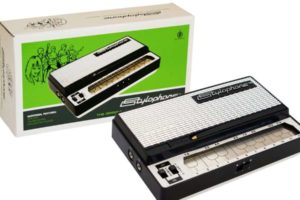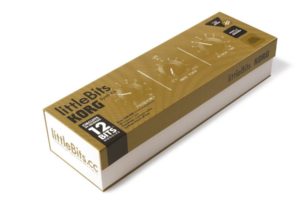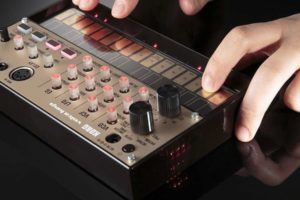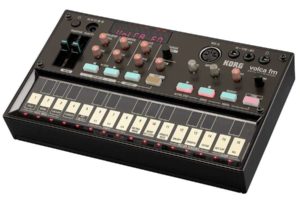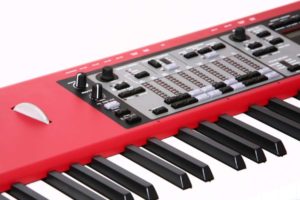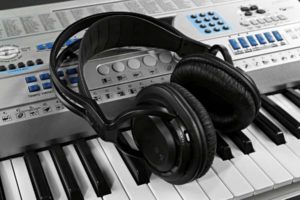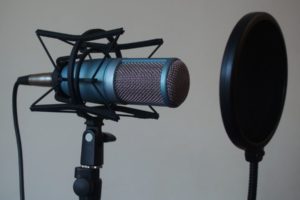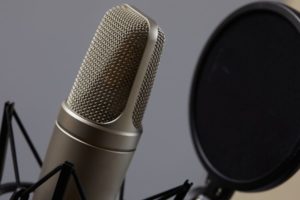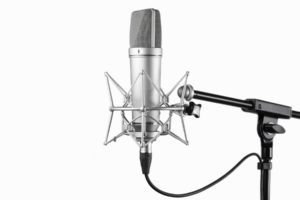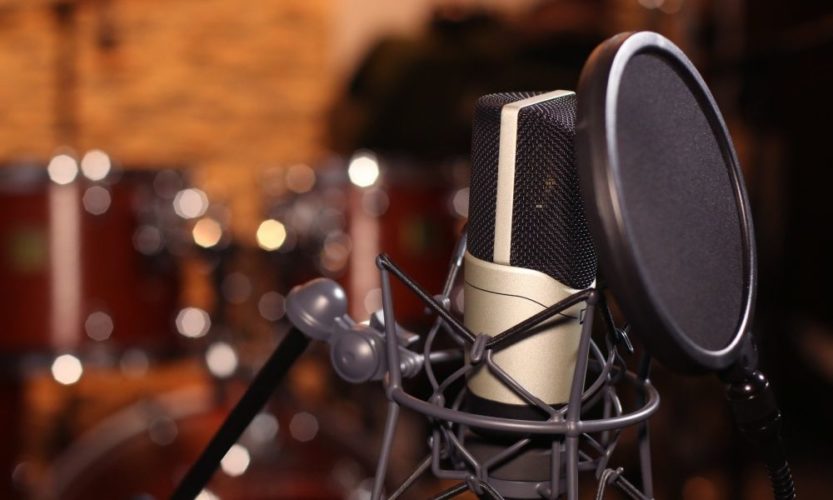
Studio microphones are indispensable instruments in any recording session – whether it be at a professional recording studio or just your typical DIY home studio.
A good recording does not rely merely on a good vocal or instrumental sound; a good recording output also relies on a good microphone. You could have everything else going smoothly, but if you have a substandard or mediocre microphone in your recording, the sound may be distorted, or worse, unclear.
It has become a trend that aspiring artists make it big or jumpstart their careers through a song recording or music video posted online and going viral. If you are an up and coming recording artist or musician, creating your own home studio is not only cheaper but also more convenient in the long run.
You have easy access to your studio whenever inspiration strikes you. But how do you go about it? And how do you choose the best studio microphone? Here are some tips you can take note of.
Anatomy of a Microphone
In order for you to choose the best studio microphone for you, you first need to know how it works. So let us get back to basics. A microphone functions almost in the same way as the human ear drums work.
It has a diaphragm which allows the mic to listen to sound and to convert it into electrical signals. When sound waves hit the diaphragm, it vibrates and, in turn, creates output signals.
Types of Studio Microphones
There are several types of studio microphones available in the market now, but the most common are condenser microphones and dynamic microphones. Another type is the USB microphones. The condenser microphone is the preferred type when it comes to recording vocals and string instruments. The dynamic microphone is the usual choice when you record bass or drum sounds.
Basically, the difference between the condenser and dynamic microphones lies in the way their diaphragms create electrical signals. A condenser microphone works with two capacitors and the difference in the distance between the two parts results to the emission of energy.
As for the dynamic microphone, vibrations pass a magnetic field over a coil. Another difference is how the diaphragms are placed. The diaphragm of a dynamic microphone is usually pointed towards the source of the sound, while the diaphragm of the condenser microphone usually is positioned to face a side of the mic.
As to the difference in the capacity between the two, the dynamic microphone is less sensitive than the condenser. Hence, it is usually used in live performances or concerts. And because it is less sensitive, it is unable to pick up the subtle changes in the sounds, unlike the highly sensitive condenser microphone.
What to Look for in the Best Studio Microphone
It should be noted that the best studio microphone is one that perfectly fits your purpose – hence, there is no universal best studio microphone that will fit everyone. However, there are some basic pointers and requirements that a certain studio microphone needs to comply with in order to be on the list of the contenders for the best studio microphone. Things to consider are the following:
Diaphragm type
There are two main options to choose from – condenser and dynamic. As a general rule, a condenser microphone captures more sonic details but handles a narrow range of sound pressure level. The dynamic microphone, on the other hand, usually has better sound rejection and typically handles high sound pressure levels. For loud sound sources, the dynamic diaphragm is the better choice.
Frequency response
This determines how a certain microphone handles different frequencies. When exposed to different frequencies, the ideal results are flat and neutral sounds. Various voice types react differently to different frequencies.
A low pitched voice works well with microphones that can handle frequencies around 200 Hz and below because they reproduce the voice better. In an alternate situation, a high pitched voice works better with a microphone that can handle high frequencies.
Polar pattern
A polar pattern shows how a sound is absorbed by a certain microphone, how it travels within the microphone, and how the sound waves direction matches the microphone’s direction.
The common polar pattern used in studio recording is the cardioid polar pattern – the sound waves enter the front and are then rejected at the rear of the microphone. For multiple sound sources or to capture the ambient sounds of a room, rather than recording directly from the source of the sound, polar patterns, like the omnidirectional or figure 8, fits the purpose better.
Power source
The condenser microphone usually requires a phantom power source. However, there is one type of condenser microphone – the tube mic – that does not need a phantom power source because it has its own power supply. A dynamic microphone, on the other hand, does not need the use of phantom power source.
Attenuation Pads
A switchable attenuation pad allows a microphone to tolerate high sound pressure levels (SPLs) without having the need to distort the recording output. The best studio microphone should at least have a switchable attenuation pad just in case your microphone will be exposed to loud noise.
This is usually important when it comes to dynamic microphones because they are the ones usually used for recording loud sound sources like guitar amps, bass, and drums.
Maximum Sound Pressure Levels
This shows the extreme volume level a certain microphone can handle before the signal weakens. The volume level exposure is measured in decibel (dB). This is very important for microphones that are usually exposed to loud sounds like dynamic microphones.
The more likely a microphone is to be exposed to high sound pressure levels (SPLs), the higher the SPL tolerance a mic should have. Ultimately, the SPL capacity of a microphone would depend on how you are going to utilize the instrument.
Pop Filter or Wind Screen
Pop filters are also known as windscreens, as it prevents the microphone from taking in too much air and prevent a sudden increase in the volume, or worse, signal clipping with the pronunciation of the letters “p” and “b“. There are microphones that have built-in pop filters to protect the microphone from the annoying pop and breathy noise.
It also serves as a protection from projectile saliva coming from overzealous users of the microphone. The best studio microphone is one with a built-in pop filter.
Budget
The best studio microphone is one that fits perfectly your purpose for using the microphone and, at the same time, one that falls within your budget. When looking for a microphone to purchase, you have to first set a budget you are willing, comfortable, and able to spend. During the course of your search, make sure that you would not go over your allocated budget.
The best studio microphone is one that has or complied with most, if not all, the points addressed above. To jump start your search for the best studio microphone, here are four (4) leading and best-selling studio microphones available in the market now and one (1) brand of pop filter to accessorize and to help in enhancing the quality of your recording:
Dragonpad USA Pop filter Studio Microphone
Do you find yourself exasperated by the popping sound and breathy noises being captured by your microphones during recordings? You need not suffer again with the help of a Dragonpad USA Pop filter Studio Microphone that acts both as a pop filter and wind screen for your studio microphone.
Get an enhanced recording or audio output with this pop filter that has a swivel mount and 360-degree flexible gooseneck holder which allows easy and convenient installation as well as use. The screen diameter reaches 6 in. while the neck length is made as long as 13 in. for convenience. The black pop filter weighs approximately 8 oz. while its dimensions are 14.6 in x 7.2 in x 1.1 in.
Pros
- Serves both as microphone protector & windscreen to avoid annoying popping sound & hissing or breathy sounds
- Enhances recording output
- 360-degree gooseneck holder – for easy & convenient use, as well as easy mounting
- Long & flexible neck for good mounting position
- Easy installment & use with its swivel mount
- Pad is made of good quality – soft with wide circumference
- Fairly affordable price
- Clean design or appearance
Cons
- Too flexible attachment neck
- Quite on the heavy side – may cause problem with the mounting of the pop filter
- Mounting bracket design makes it difficult to find a good position to attach the pop filter
- Does not stay in place for a long time
AKG Perception 220 Professional Studio Microphone
Have a go at making your own recording studio with a dependable microphone like AKG Perception 220 Professional Studio Microphone. The product is a condenser microphone with a large diaphragm protected by a rugged and sturdy metallic design to withstand the strain of day to day use.
It boasts of a switchable bass cut filter and an attenuation pad that allow the mic to make a clear and accurate recording, even after exposure to high sound pressure levels up to 155 dB. The silver blue microphone has a spider-like shock mount with an aluminum carrying case. It uses the cardioids polar pattern and weighs only 2 lbs. with the following dimensions: 9 in x 5.5 in x 9.8 in.
Pros
- Condenser microphone with large diaphragm
- Creates clear & warm sounds
- Can handle high sound pressure levels up to 155 dB
- Enhances the sound output of the recording
- Eliminates footfall & rumble noises
- Long service life
- Sturdy, spider-like metallic shock mount that secures the microphone
- Shock mount has an adapter that makes the product compatible even with smaller microphone stands
- Clean & accurate recording
- With an aluminum carrying case
- Fairly affordable purchase price
Cons
- Oversensitive – may pick up all sounds made by the surroundings
- Have to be paired with a preamp for better guitar or instrumental recordings
Samson Meteor Mic USB Studio Microphone
Finding a microphone that you can use anywhere and on anything is quite a challenging task. Well, you do not need to set your sights that far if you are on the lookout for a universal microphone because Samson Meteor Mic USB Studio Microphone fits the bill perfectly.
With its 25 mm large diaphragm, this USB studio condenser microphone boasts of a 14.1/ 48 kHz, 16-bit resolution with a 20 Hz to 20 kHz smooth and flat frequency response. For non-latency monitoring, the Meteor Mic has a 1/8 in headphone jack you can use.
This chrome colored mic only weighs 2 lbs. and has the following dimensions: 6 in x 3 in x 5 in. Finally, the Meteor Mic utilizes a cardioid pick-up polar pattern and can be used with an Ipad.
Pros
- Universal USB condenser microphone for studio & computer recording
- 25 mm large diaphragm
- Rich & professional audio recording output
- Smooth frequency response
- Sleek & stylish design
- Foldable leg design for maximum positioning
- With an integrated mic stand adapter
- No need for driver installation
- No need for USB powered hub to work
- Works with Ipad via Apple USB connector
- Easy to set up, use, & control
- Has privacy settings with its mute switch
- Headphones volume knob affords users complete control
Cons
- Rubber found at the legs falls off after some weeks of use
- Usually not compatible with Windows OS
- “No driver” feature makes it difficult to fix driver non-recognition
- Mini USB port and cable are not made to be durable
Audix D6 Dynamic Microphone
Whether you need a microphone to use for an on-stage performance, for live or recorded broadcasting, or even for a studio vocal, speech, and instrument recording, you would need an excellent performing microphone with you. There is no better way to do all those things then than to do it with an Audix D6 Dynamic Microphone.
The Audix D6 is the best for your instruments because of its VLM diaphragm, ground shaking low-end feature, wide frequency response (30 Hz to 15 kHz), high SPLs absorption in excess of 144 dB, cardioid pickup pattern, dynamic transducer type, balanced output, and low impedance feature (200 ohms).
The body of Audix D6 is made of aluminum with black anodized finish. It is also designed to be lightweight at 7.7 oz. and compact with 4.6 in x 2 in x 2 in as dimensions for easy positioning.
Pros
- Cardioid pickup pattern allows isolation & feedback control
- VLM diaphragm allows recording of natural & accurate sounds
- Wide frequency response (30 Hz up to 15 kHz)
- Perfect mic choice for your bass cabinets, large toms, and kick drums
- Can handle sound pressure levels over 144 dB SPL
- Lightweight & compact
- Flawless and unimpeded design for performance without interference
- With Switchcraft XLR connector & heavy-duty, tension-fit microphone nylon clip
Cons
- Needs more EQ at the board for kick drums & larger venues and studios
- Gates or compressors, as well as EQs, should be used responsibly to achieve that perfect sound recording
Neewer NW-800 Professional Studio Broadcasting & Recording Microphone
Fancy making a recording studio in your house? Buying a microphone set is one thing that you cannot dispense with. Try your first step in becoming a recording artist with the Neewer NW-800 Professional Studio Broadcasting & Recording Microphone set that includes a condenser microphone, mic shock mount, anti-wind foam cap (ball type), and 2.5 meters mic power cable.
The microphone item only weighs 11 oz./ 16 g and is made of a black metal material that runs on a 5 V power source with features like full electronic circuit control, bass reduction switch, cardioids output, low noise, and wide dynamic range. The entire item weighs only 1.5 lbs. and the dimensions are at 12.1 in x 7.4 in x 3.6 in.
Pros
- Condenser microphone set – anti-wind foam cap, power cable, & mic shock mount
- Affordable & cost effective
- Has a bass reduction switch to reduce pick up of surrounding noises
- Precision electronic circuit eliminates harmonic & crossover distortions
- Wide dynamic range & good cardioid pickup output
- Durable, sturdy & fashionable metal design
- Lightweight & compact
- Long service lifetime
- Anti-wind foam cap protects, cleans & enhances the sound quality of the mic
Cons
- Not compatible with mobile phones, Mac, and tablets
- Needs a sound card for better sound output
- Needs a 48 V phantom power adapter when power supply is short
- Works only with a device that has 5 V
- Produces unclear and low sound when the 5 V power requirement is not met
- Additional cost for the purchase of sound card & phantom adapter
